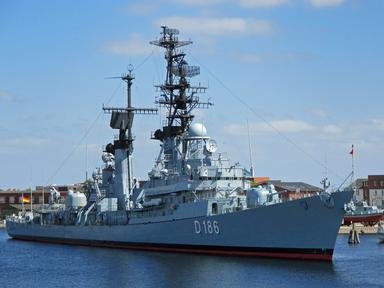Quiz Answer Key and Fun Facts
1. It is the number of an aircraft's engines and its wing configurations that differentiates a flying boat from a floatplane. True or false?
2. Flying for the first time in 1938, the US Navy-operated Vought OS2U floatplane which was standard equipment on-board all US Navy battleships and heavy cruisers, was known by which of the following nicknames?
3. Many a stranded seaman or airman would be pleased to see the small aircraft known as the Walrus flying toward them. Which British manufacturer, renowned for an iconic single-engined fighter design, was initially responsible for the design and manufacture of the Walrus?
4. In 1938 this aircraft was adopted by the German Navy and became the Kriegsmarine standard catapult launched floatplane. Which small two-seat aircraft was this?
5. The Beriev MBR-2 was a short range, coastal flying boat operated by the French Navy during the early years of the Second World War. True or false?
6. The Italian floatplane known as the Airone (Heron) was an aircraft designed and built by which of the following manufacturers?
7. This aircraft became famous for its role in the detection of the German battleship, the KMS Bismarck. Which aircraft, a product of US manufacturer Consolidated, was this?
8. On the 26th of September 1939, this aircraft gained the unenviable distinction of being the Luftwaffe's first ever combat loss of the Second World War when an example was shot down by three British Fleet Air Arm fighters. Which aircraft was this?
9. The Kawanishi H8K, a large four engined flying boat operated by the Imperial Japanese Navy had, like all other Japanese aircraft, an allied reporting name. Which girl's name was allocated to this type?
10. Introduced in 1938 as the US Navy's scout and observation floatplane, the Curtiss SOC-3 Seasmew proved to be an unsatisfactory replacement for its predecessor. Which floatplane, also designed and built by Curtiss, was the SOC-3 Seasmew intended to replace?
11. The Japanese Aichi M6A Seiran was a parasite fighter that was designed to be launched from beneath the wing of a larger flying boat. True or false?
12. This large flying boat, operated by the RAF, was designed and built by the Blackburn Company and was named for a city found in both Scotland and across the world in Australia. Which city was this aircraft named for?
13. The Nakajima A6M2-N Rufe floatplane was a development or customisation of which famous Japanese fighter aircraft?
14. First flown in 1936, this German flying boat gained an affectionate nickname given to it by its crews because of the shapely design of its hull. Known as the Flying Shoe, this aircraft was designed by a company well known for their unusual types. Which manufacturer produced the Bv.138?
15. Operated by the RAF Coastal Command with squadrons based in south western Wales, the Short Sunderland flying boat (certainly one of the more heavily armed flying boats of the war) was known by the German Navy and the Luftwaffe as the Stachelschwein or Flying ____?
Source: Author
SisterSeagull
This quiz was reviewed by FunTrivia editor
stedman before going online.
Any errors found in FunTrivia content are routinely corrected through our feedback system.
